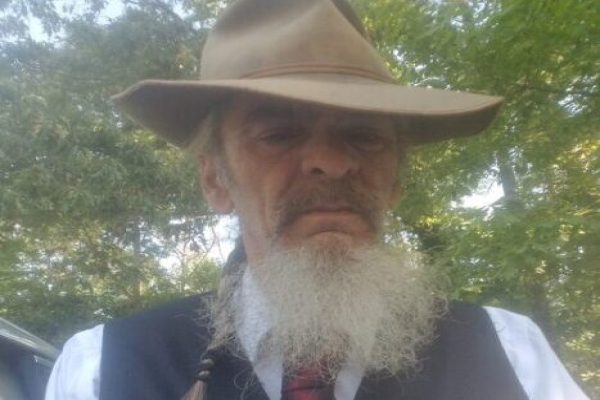When the trains went by, plaster and dust drifted from the ceiling, sparkling in the bare bulbs and humming fluorescent tubes that lit the most magical place in the world.
He was really too grown up to think like a little kid anymore, but every time he went through the glass door, with its single tiny hole that allowed sunlight to beam through, he felt like the newspaper office was magical, special, important. There were books of old newspapers, bearing the history of the community, state, and world, neatly laid out in Scotch Bodoni print. The newspapers were records of life and death, created first by handset lead type, then by the great crashing Linotype machine and finally, printed on paper that stank of chemicals like the darkroom, where pictures appeared in chemical baths, shades of black and white and gray slowly painted into frozen moments of time.
There were other books, too, books of pictures used to build advertisements, the advertisements that made the money that allowed the newspaper to live, sometimes thriving, sometimes barely surviving, most of the time somewhere in the middle. He was forbidden to mess with the clipart books, so naturally he leafed through them every chance he got. The bound editions of the newspaper were not off-limits, but extreme care was required, as some of the old yellow pages were brittle.
Then there were other books – an entire wall of his daddy’s office was stacked with copies of the Congressional Record, and some were even stacked on the floor and a desk (not the desk where his daddy’s typewriter sat, of course.) With enough patience and care, the boy could read the often boring, sometimes exciting words spoken by Senators, Congressmen, and even Presidents during moments in history that were boiled down to a few sentences or pages in his schoolbooks.
Some of the speeches and bills were about wars, the Great Depression, Prohibition, women and then black people voting, and other major events, while others were so boring he couldn’t even really understand what the politicians had been talking about back when their words mattered and the pages were clean and white, not dusty and yellow. Sometimes his daddy would explain, and it would become clearer.
The boy liked learning about history in the big books, but he preferred the excitement when things were happening and the light went off over the Associated Press printer.
There was an alarm, too, but the AP ticker was near the press room, and the thunder of the Goss Community press often drowned out the alarm or the chatter of the keys. The ticker ran through much of the day, and even sometimes in the night when he was there with his mom and dad, but when something important happened, the alarm bell would buzz and the light would come on. Everyone would stop what they were doing and look up when the light flashed and the buzzer sounded.
Stories from around the world came across the ticker – Nixon’s resignation, the fall of Saigon, the death of Elvis, and other stories that weren’t as big. Sometimes the story was big enough to require that the newspaper be rebuilt; only once could the boy remember his daddy actually stopping the presses like people did in the movies.
Paper for the ticker was narrow, maybe half the size of typing paper, but it was a long, continuous roll. When a story ended, the cheap paper was torn across a sharp edge of clear plastic that was supposed to line up with the blank space at the end of a story, but usually one had to carefully turn a knob to get to the spot where it could be torn off.
Sometimes the boy was assigned the task of waiting for stories to come off the ticker, then hustling them to his daddy’s office up front, where the old man would edit the copy, add a paragraph or two pounded out on his Underwood typewriter and tape it to the AP copy. Then the boy ran to take it to a typesetter. Occasionally the old man stood over the typesetter who was carefully entering the edited copy into the smelly Compugraphic machines, but usually he trusted the typesetters.
The Compugraphics were plastic and aluminum and ugly. They stank and leaked fluid and broke down a lot more often than the old Linotypes and Ludlow, which were fed by bars of lead lowered into a heated pot on the side of the machine.
The Linotype operators were almost always men, men with scars on their hands and arms from flying hot lead, arms and shoulders made strong from pounding the keys that caused sticks of type to be cast in lead, words and sentences and paragraphs and history that were then clamped into a frame that allowed them to be attached to older press that was fed by sheets, rather than the thousand-pound rolls that fed the offset Goss. The old press was now only used in emergencies or for special projects. He really liked the old iron and steel and brass of the Linotype and Ludlow, but the Goss was one of the most fascinating things the boy had ever seen.
The process for the Goss was more like magic than machine; pages were assembled and photographed by a camera with bright burning lights that the paper boys were forbidden to watch (so naturally they always tried). A negative of the page was created just like a photographic negative, and printed the same way, but it was printed on sheets of aluminum.
The aluminum rattled when it was fed into the processor, then the sheets were placed on the Goss, where the treated aluminum picked up ink and rolled against the newsprint, thousands and thousands of times. The pages were then cut and folded and spat out on a conveyer belt. The first few copies were always smeared, but the pressmen made adjustments and soon the papers would come flowing out, neatly printed records of the day’s history.
When the press was rolling, the boys could gather armsful of papers from the end of the conveyor so they could start their routes. Copies were bundled together to be carried to vendors and machines. The entire goal was to get the papers on the street as fast as possible, get the history into people’s hands before the competition.
But this was the last time the paper would be printed. Like the injured lion Robert Ruark put out of his misery in Africa, it was old and tired, beaten down by younger competitors, starving. There was no merciful bullet to end it all, although the press did have one last roar, then there was just silence.
There were no other boys waiting for newspapers to come off the press. His daddy grabbed a few copies, then walked slowly back to his office. The machines were cool. The press was not cleaned and prepared for the next run, but allowed to remain dirty, splashes of old ink here and there drying.
People spoke in hushed tones, where they usually yelled and laughed and sometimes cursed loudly so they could be heard over the press.
The AP machine was not only off, it was unplugged.
The silence was terrifying.
The editorial cartoon for the day was on the layout board. It was a piece of newspaper letterhead, with –30– written across it. A ‘30’ meant the end, finished, done.
The boy who was really too grown up to be easily scared anymore was frightened, and he didn’t know why. He headed for his father’s office. It was a safe place, where there could be no harm. His daddy could explain. He could always explain.
But in the silence, the boy heard a sound he’d never heard before, and that he never heard again.
It was the sound of his father crying.
The Dunn Dispatch ceased publication on April 26, 1978. From that last edition until 2000, my father wrote a column saying goodbye to what he considered one of the finest times in his life. Sometimes it was published, sometimes it wasn’t.
In 2001, he lay in his hospital bed, too weak to write a column about “our” newspaper. He asked me to never let folks forget, and it is a promise I have kept.
I made another promise that day, a promise to myself. You’ll read that one in a few days.







